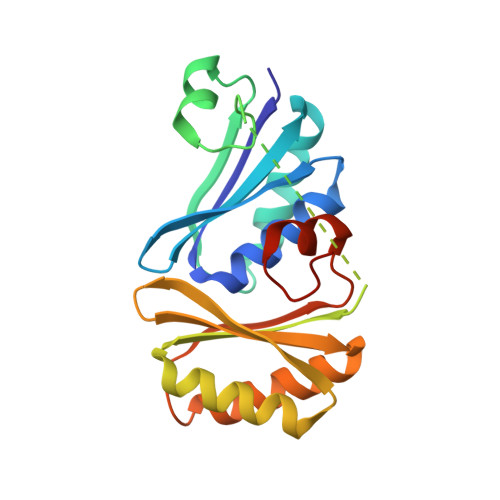Structural Characterization of a Synthetic Tandem-Domain Bacterial Microcompartment Shell Protein Capable of Forming Icosahedral Shell Assemblies.
Sutter, M., McGuire, S., Ferlez, B., Kerfeld, C.A.(2019) ACS Synth Biol 8: 668-674
- PubMed: 30901520
- DOI: https://doi.org/10.1021/acssynbio.9b00011
- Primary Citation of Related Structures:
6NER - PubMed Abstract:
Bacterial microcompartments are subcellular compartments found in many prokaryotes; they consist of a protein shell that encapsulates enzymes that perform a variety of functions. The shell protects the cell from potentially toxic intermediates and colocalizes enzymes for higher efficiency. Accordingly, it is of considerable interest for biotechnological applications. We have previously structurally characterized an intact 40 nm shell comprising three different types of proteins. One of those proteins, BMC-H, forms a cyclic hexamer; here we have engineered a synthetic protein that consists of a tandem duplication of BMC-H connected by a short linker. The synthetic protein forms cyclic trimers that self-assemble to form a smaller (25 nm) icosahedral shell with gaps at the pentamer positions. When coexpressed in vivo with the pentamer fused to an affinity tag we can purify complete icosahedral shells. This engineered shell protein constitutes a minimal shell system to study permeability; reducing symmetry from 6- to 3-fold will allow for finer control of the pore environment. We have determined a crystal structure of this shell to guide rational engineering of this microcompartment shell for biotechnological applications.
Organizational Affiliation:
Environmental Genomics and Systems Biology and Molecular Biophysics and Integrative Bioimaging Divisions , Lawrence Berkeley National Laboratory , Berkeley , California 94720 , United States.














